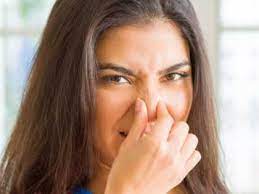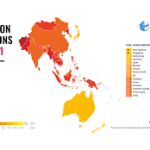
Recurrent wheezing in children is a common issue that can significantly impact their quality of life. While many cases are managed with standard treatments, recent research suggests that some children may need new, tailored approaches to better control their symptoms and improve outcomes.
Understanding Recurrent Wheeze in Children
Wheezing is a high-pitched whistling sound made during breathing, typically associated with conditions like asthma or respiratory infections. In children, recurrent wheezing can be particularly concerning, as it may indicate underlying issues that require medical attention. Recurrent wheezing is not a diagnosis itself but a symptom that can arise from various conditions, including asthma, viral infections, allergies, and even structural abnormalities in the airways.
See here:
Current Standard Treatments
The standard treatment for wheezing in children often involves the use of bronchodilators and inhaled corticosteroids. These medications help to open the airways and reduce inflammation, providing relief from symptoms. For children with asthma, these treatments are typically effective in managing symptoms and preventing exacerbations.
However, not all children respond well to these standard treatments. Some continue to experience frequent wheezing episodes, leading to missed school days, disrupted sleep, and ongoing discomfort. This has prompted researchers and clinicians to explore new treatment options that might be more effective for certain groups of children.
The Need for New Treatment Approaches
1. Identifying Subtypes of Recurrent Wheeze
Recent studies have highlighted the importance of identifying different subtypes of recurrent wheeze in children. Not all wheezing is caused by asthma, and in some cases, treating all children with the same standard medications may not be appropriate. For example, wheezing triggered by viral infections may require different management strategies than wheezing caused by allergies or environmental factors.
Understanding the specific causes of recurrent wheeze in each child can help healthcare providers tailor treatments more effectively. This personalized approach could involve using different types of medications or even addressing underlying issues like gastroesophageal reflux or airway malformations.
2. Exploring Non-Pharmacological Interventions
In addition to exploring new medications, researchers are also investigating non-pharmacological interventions that could help reduce the frequency and severity of wheezing episodes. These include environmental modifications, such as reducing exposure to allergens or pollutants, and lifestyle changes like improving diet and increasing physical activity.
For some children, interventions like breathing exercises, physiotherapy, and even acupuncture have shown promise in reducing wheeze frequency. These approaches may be particularly useful for children who do not respond well to traditional medications or for whom medication side effects are a concern.
3. Investigating New Medications and Therapies
Ongoing research is also focused on developing new medications and therapies that target the specific mechanisms involved in recurrent wheeze. For instance, biologic therapies that target specific inflammatory pathways have shown potential in treating severe asthma and may be applicable to some cases of recurrent wheeze.
Another area of interest is the use of immunomodulatory treatments that could help children’s immune systems better manage triggers that lead to wheezing. These treatments are still in the early stages of research but could represent a significant advancement in the management of recurrent wheeze in children.
The Importance of Early Diagnosis and Intervention
One of the key factors in effectively managing recurrent wheeze is early diagnosis and intervention. The sooner a child’s specific condition is identified, the more quickly appropriate treatments can be implemented. This not only helps to alleviate symptoms but can also prevent long-term complications, such as the development of chronic asthma or other respiratory conditions.
Parents and caregivers play a crucial role in recognizing the signs of recurrent wheeze and seeking medical advice. Persistent coughing, especially at night or after physical activity, shortness of breath, and a noticeable whistling sound when breathing are all indicators that a child may need further evaluation.
Conclusion
Recurrent wheeze in children is a complex issue that may require more than standard treatments to manage effectively. As research continues to uncover the various causes and subtypes of wheezing, new approaches and therapies are being explored to provide better outcomes for affected children. Personalized treatment plans, non-pharmacological interventions, and the development of new medications hold promise for improving the lives of children with recurrent wheeze. Early diagnosis and intervention remain key to ensuring these children receive the most appropriate care and support.





